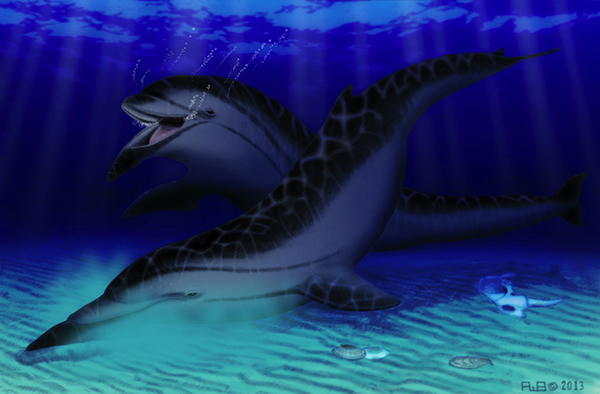Extinct Mammal Had an Extreme Underbite
The remains of a long-lost porpoise reveal that the marine mammal sported a distinct and unusual underbite, which is described in the latest issue of Current Biology.
The porpoise, Semirostrum ceruttii, lived between 1.6 and 5 million years ago in waters off of what is now the coast of California. Researchers think it used the long, lower part of its snout to hunt for food.
“The extinct porpoise is a bizarre new animal, with the mandible extending well beyond the beak-like snout, which it may have used for probing and ‘skimming’ in the substrate,” co-author Rachel Racicot of Yale University said in a press release. “Although this morphology has been recorded in birds and fish, this is the first described mammal with this anatomy.”
The birds and fish that she refers to are black skimmers (birds) and small fish called half beaks. Both have long, lower jaws that help them to feel around for food at night, or under low-light conditions.
Remains of the porpoise were first found in early rock formations along the California coast in 1990. More recent medical CT scans of the specimen revealed the porpoise’s unusual anatomy.
In addition to the underbite, it possessed eyes that were tinier than those of today’s porpoises. The extinct mammal therefore probably had poor eyesight, making its jaw probing all the more important to its survival.
The researchers think the animal was, at least in some ways, similar to today’s freshwater river dolphins.
“Today we don’t find anything resembling river dolphins in the same kinds of habitats that Semirostrum likely occupied,” Racicot said, adding that the porpoise lineage may have become more specialized over time.
She and her colleagues hint that more interesting animal discoveries are on the near horizon, thanks to 3-D imaging that allows for nondestructive analysis of museum specimens, some of which have been stored away for decades.
“Many exciting new species awaiting description are lying in museum collections, but the sort of detailed descriptions that are required to do full justice to them often take a lot of time,” Racicot said.
Illustration: Bobby Boessenecker(Mar 13, 2014 12:00 PM ET // by Jennifer Viegas)












